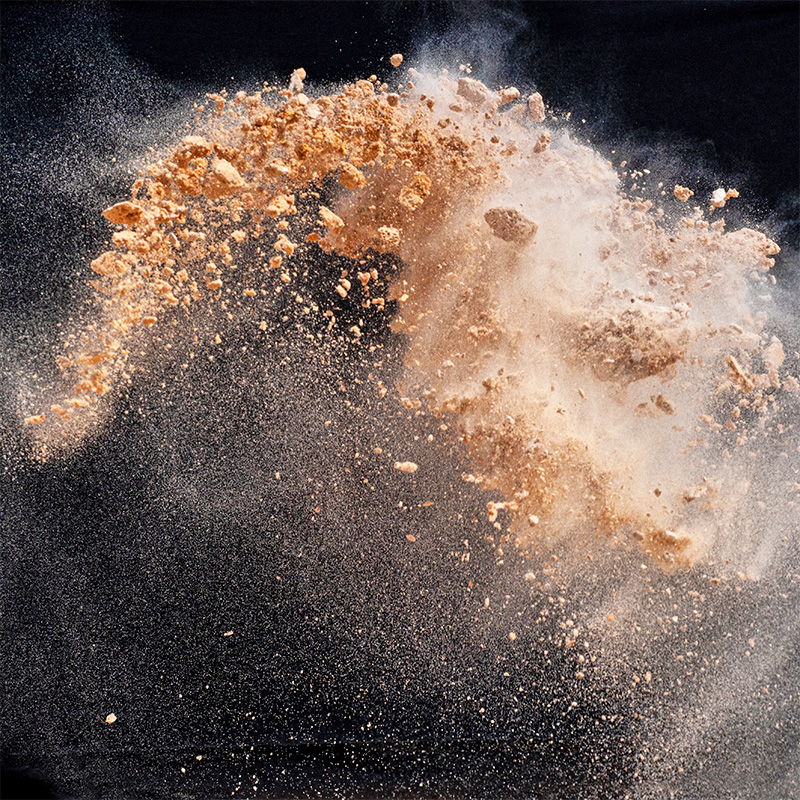
Fluidisation, Fluidise, loosening powder by air injection
A powder is fluidized when all particles are surrounded by a gas. The powder particles no longer touch each other. The friction between them is eliminated. Fluidized powder behaves like a low-viscosity liquid or dust. The smallest openings in the container (e.g. an incomplete weld seam, a leaking fitting) lead to unwanted dust leakage. Fluidization occurs more easily the smaller the particles.
Fluidization occurs when finely divided, dry powder is poured, conveyed or mixed. Fluidization is particularly strong when a powder is conveyed pneumatically. Fluidization is particularly pronounced during pneumatic pressure conveying. Fluidization can be very helpful in effectively rearranging powders. When different powders have similar particle sizes and similar bulk densities, a pneumatic mixing process can be very effective.
Air admixing and fluidization is often used when powder clogs the silo outlet (pneumatic discharge aid).
Fluidization technology is particularly effective in drying moist powders. So-called fluidized bed dryers fluidize the powder using hot air. This can be done batchwise or continuously.
All the air that is blown in to fluidize the powder must be separated again as dust. This often requires large filter systems. Under certain circumstances, the air/gas can remain in the fluidized powder for a very long time. This is referred to as the "air holding capacity" of the powder.
Fluidized powders are difficult to handle, difficult to dose and also difficult to fill. Fluidized powders can segregate quickly if their particle sizes or bulk densities differ....
In the amixon®, mixers are manufactured to be gas-tight. Mixing can take place in them under an accompanying vacuum, and the powders are then no longer fluidized. Fluidization can also be avoided if small amounts of a liquid (low viscosity with low surface tension) are added. You can read more about this in the amixon blog: "Factors for a functioning powder moistening in the mixing process" and "Rheology of liquids in connection with powder mixing".
